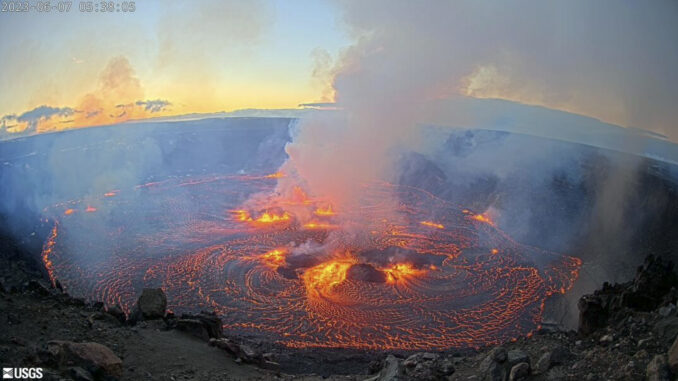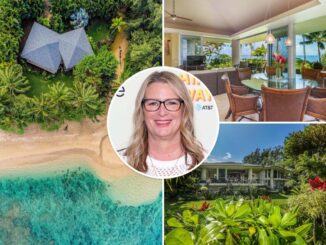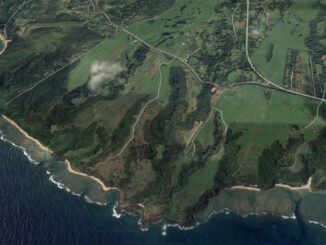
In 2018, a catastrophic volcanic eruption turned Hawaii’s Puna District into a disaster zone, swallowing more than 700 homes and displacing thousands in a slow-motion calamity.
Fast forward to today, and Puna is Hawaii’s fastest-growing region, drawing island dwellers and mainland transplants alike with the promise of affordable homeownership in paradise.
Land in an active lava zone comes cheap, and Puna, in the shadow of the active volcano Kilauea, has become a hotspot for those seeking refuge on the cheapest island in the nation’s most expensive state. Despite the risks, buyers are flooding the area, driving up prices there.
Jared C. Gates, a realtor and Puna homeowner since 2005, describes Puna to the Wall Street Journal as the “last bastion of affordability” in Hawaii.
None of the homes that were destroyed in the lava have been rebuilt. Several homeowners ended up selling their properties to neighbors or the county in a federally funded buyback program, but that land remains vacant for now.
And since, the land has undergone a massive transformation — and it has become difficult for homeowners to establish where their properties start and end.
“It took out roughly a third of the subdivision; totally surreal,” Gates told The Journal. “And houses are selling there again.”
On a waiter’s salary, Gates purchased his first home — a steady fixer-upper — in Puna back in 2005.
The lack of modern infrastructure, including paved roads and utility lines, hasn’t deterred newcomers.
The day the volcano erupted, Gates said he had a three-bedroom, two-bathroom home with lush surroundings about two blocks from the lava field. The heat and steam radiated into the vents of the home.
But three weeks later, the home still sold for $325,000 in cash.
The 2018 eruption, centered in Leilani Estates, did little to curb interest.
Early buyers included Native Hawaiians and mainland hippies seeking off-grid living. As home prices soared nationally, working families and retirees began hunting for deals on the Big Island.
However, the absence of essential infrastructure still poses challenges. The district lacks a wastewater treatment plant and a hospital, and many residents rely on rainwater and cesspools. County officials cite federal funding restrictions and state laws preventing major investments in high-risk lava zones.
Despite the risks, the housing market in Puna is booming.
David Booth and Juan Polanco, former Phoenix residents, cite affordability as the main attraction. Remote work during the pandemic has accelerated the influx of newcomers, including those seeking early retirement.
“The attraction to the Big Island was affordability,” Booth, 61, told the Journal.
Booth and Polanco paid cash for a 1,500-square-foot home that has been split into three units and is located on a 1-acre lot in Hawaiian Paradise Park, a subdivision located in the less-risky lava zone 3.
“You can’t have this on any other island for this price point,” he added.
Properties in lava zones 1 and 2 — some with sweeping oceanfront views — were even cheaper.
Travis Edwards, who retired from delivery truck driving in Southern California, found paradise in Puna, overlooking the risks. The slow-paced lifestyle and the prospect of early retirement outweighed concerns about natural disasters.
“It’s just paradise,” Edwards, who now drives limousines part-time, told the outlet. “The rest of the world doesn’t exist when you’re here.”
However, despite its low cost comparable to other parts of the island, rising prices are leaving some, like native Chantel Takabayashi, feeling stuck. Priced out of desirable neighborhoods, she faces the challenge of finding affordable housing despite her income as a state prison guard.
“I make pretty decent money and I work long, endless hours, and I still can’t afford better housing,” she said.
The rental market in Puna has also seen a surge, with three-bedroom homes that once rented for $1,500 now going for as much as $2,300. Tina Garber, a local for 21 years, highlights the pain and suffering on local folks as housing costs soar.
“People that come over here with money, they do not realize that it is so hard to make it here,” Garber said. “They think, ‘Oh, a good deal in Hawaii.’ But it puts a lot of pain and suffering on local folks.”
Real Estate – Latest NYC, US & Celebrity News



